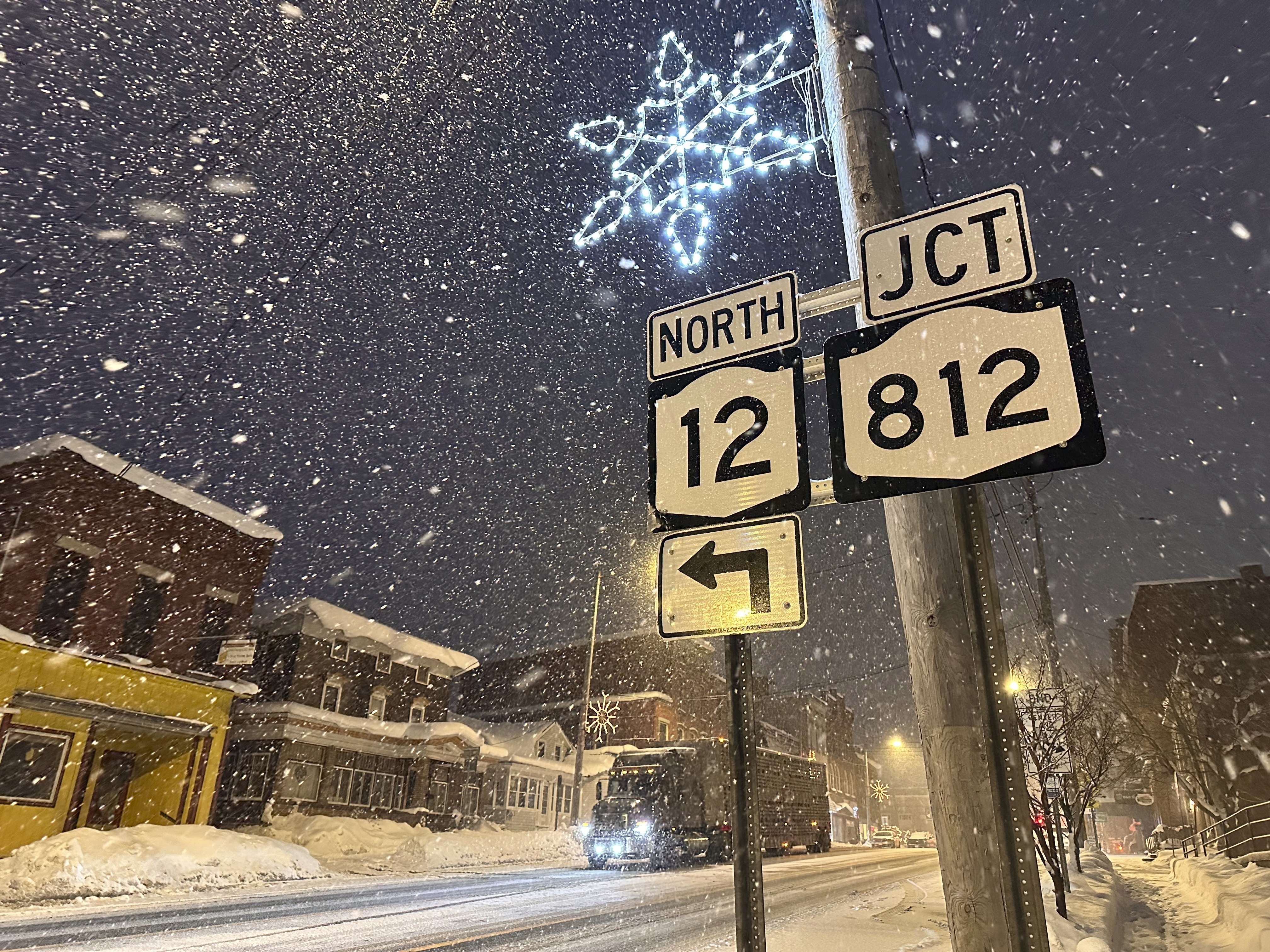When you want a beautiful front yard, you add plants and arrange the terrain with that goal in mind. But what if you want to create an aesthetically pleasing garden and also grow some food crops while you’re at it? Or, maybe you only have a small space — which requires your pretty landscape to double as a source of food. It may be time to learn the art of edible landscaping (sometimes called foodscaping).
Frankly, lots of edible plants have year-round aesthetic appeal. “Often people don’t recognize the winter textures of [edible] plants, and they’re not incorporating their flowers and shrubs into their landscape,” says Todd Beasley, director of the Botanic Garden at Georgia Southern University. “With edible landscaping, you essentially can pocket fill your landscape with something seasonal that is still purposeful all year long.”
What is edible landscaping?
In edible landscaping, you incorporate fruit, vegetable and herb plants into your garden — all while adhering to the design principles of ornamental gardening. When laying out your plants, you consider color, size, texture and height. You think about how to create a balanced and unified look.
But you also keep tabs on the unique needs of your edible plants.
“Unlike ornamental gardens, edible landscapes demand attention to soil health, as nutrient-rich soil is essential for producing healthy, consumable plants,” says gardening expert Lindsey Hyland, founder of the site Urban Organic Yield. “And regular monitoring and harvesting are key to promote continuous growth and yield.”

Scripps News Life
Summer gardening: How to attract more pollinators
Plus, you have to be more mindful when placing your plants.
“Be cautious about how close your edible plants are to a roadside,” says Jessica Warren, an agricultural and natural resources agent at The University of Georgia. “If there’s municipal spraying or HOA spraying that goes on, or there’s a lot of runoff or other pollution, these aren’t things you want your food exposed to.”
Best plants for edible landscaping
An edible landscape will require a bit more work, since you’ll be monitoring your yields, harvesting and possibly replanting. So when choosing your ornamental plants, go with reliable, low-maintenance varieties that won’t take up too much of your time.
Native plants — those that are well-suited to your hardiness zone — are your best option. “They’re going to be more adapted to the soils, to the climate, to the weather patterns, to the diseases and to the insect predators that are present,” says Warren. Check online to find out which plants grow best in your area, or ask at a native plant nursery. Sticking with perennials (rather than annuals) is a good bet, too, since they come back on their own year after year.
And when you’re choosing ornamentals that will be planted near edibles, go with the varieties that thrive under similar conditions.

Science and Tech
Why you should 'leave the leaves' in your yard and garden
Consider the sunlight required for growing your vegetation
One important factor is the amount of sunlight needed. “The key for almost all types of edible vegetation is snagging a location that basks in full sun, meaning it should soak up direct sunlight for at least six hours a day,” says Hyland. So if you’re planting, say, tomatoes, peppers or cucumbers, you’ll want your ornamentals to be the type that also require lots of sunlight — such as salvia, phlox, milkweed, echinacea and black-eyed Susan.
Some edible plants can grow with less sunlight. If you’re cultivating carrots, beets or leafy greens, you might plant them alongside more shade-tolerant ornamentals like hostas, hellebores and coral bells.
There are many edible plants that are naturally attractive on their own, and the varieties you choose to plant will depend on your hardiness zone.
Red Russian kale (hardiness zones 3 – 10) have large, wavy leaves that are a vibrant, reddish purple color. Toscana strawberries (hardiness zones 5 – 9) produce gorgeous pink flowers. And tricolor variegata chili peppers (hardiness zones 9 – 11) have dark green waxy leaves and lovely purple flowers.

Science and Tech
Tiny forests: Greening America's urban landscapes, one plot at a time
Edible plants: Perennials vs Annuals
We typically think of edible plants as vegetable crops that need to be planted and harvested on a continual rotation. And that is the case with root tubers, leafy greens, legumes and many others. But there’s also a host of perennials that will keep coming back year after year, no replanting required.
“There are flowering trees that produce fruits that can be the staples of your garden year round,” says Beasley. “Peach trees have absolutely beautiful blossoms, as do apple trees.”
Among Beasley’s favorite perennials are blueberries — especially the tifblue, powder blue and climax varieties. Blueberries can be grown in various hardiness zones depending on the variety.
Beasley doesn’t just love the blueberries, but the plant itself. “It’s a beautiful blue-tinted shrub, and blue is one of the hardest colors to come by naturally in a landscape,” he says.
He also urges people not to forget about vine plants like kiwis (hardiness zones 7 – 9) and grapes (hardiness zones 5 – 9). These are also perennials, and they can drape beautifully on walls and trellises.
Planting tips for an edible landscape
When your landscape is both ornamental and edible, it’s doubly important that you follow a basic rule of gardening: Plant for the size it will become when it’s grown. You’ll find the information for mature spacing on the seed pack or on the tag of a plant.
“Sometimes when we’re first planting, we think, ‘Oh, I’ve got too much space between these plants,'” says Warren. “But then in a year or two, you’ll thank yourself [for leaving room].” When initially planted, a fruit tree doesn’t look like it will ravage a flower bed, but give it time!

Mental Health
Many Americans are turning to Bonsai trees to relieve stress
What to do with the garden space once you harvest the crops
Annual edible plants can also pose a challenge to a landscape design, since harvesting the food can leave brown spaces scattered throughout your foliage and flowers. Hyland addresses this by continually replanting as she goes.
“After harvesting the crops, I immediately fill the space with either a cover crop or a new plant that’s in season,” says Hyland. “This practice ensures there’s no dead space in the garden, keeps the soil healthy, and maintains the aesthetic appeal of my edible landscape.”
To keep the area productive, she tends to switch between seasonal vegetables or herbs. “For example, after harvesting spring peas, I might plant heat-loving tomatoes in their place,” she says. “This cycle of planting keeps the soil active and my table supplied with fresh produce.”
Deterring critters from eating your edible landscape
One of the hazards of edible landscaping is that your yard may attract wildlife who will also want to eat the food you’re growing. But chemical animal repellents can be toxic to humans, too, and you want to avoid pesticides as much as possible.
Some landscapers try to tackle the problem of creatures eating their plants by placing plastic netting around their plants, but Warren warns against this practice, which can entangle animals such as snakes. “It can cut them in half,” she says. “And what I always tell clients is that whether you like snakes or you hate snakes, I’m betting you don’t want to have to clean that up.”
Another strategy is to be intentional about which plants you place on the outer edge of your edible landscape. For example, there are plants in the garlic and mint families that are off-putting to wildlife.
Warren concedes that if the local deer are hungry enough, they will eat anything. She suggests that people anticipate sharing a bit of food with the wildlife in their vicinity. “Whenever you’re planting food crops, you need to plan to lose a little bit and be OK with that, because we’re never going to control nature,” she says.
Items to help get you started creating an edible landscape
If you’re new to edible landscaping, you may need a few items to begin.
“I think with all things, start small to see how you do before you invest more time and energy and money into it,” says Beasley. You might begin by incorporating just a few containers or raised beds within a typical ornamental design.
Consider a food-grade planter like one of the galvanized raised garden beds below:

Whatever type of plant you decide to grow, you want to have the appropriate soil for its needs. Warren suggests calling your local extension service to test your soil. “Before you start spending money on fertilizers and supplements that you may not need, spend a few dollars and get your soil tested before planting,” she says.
If you’re just adding a few containers of edible plants, you’ll also need potting soil.
Of course, if you’re brand new to gardening, you will need to buy a sturdy trowel with a sharp tip for scooping soil.
Once you’ve begun incorporating a few edible plants into your garden — and enjoying the bounty they produce — you’ll probably want to start adding more!
This story was originally published by Jennifer Graham Kizer at Simplemost.com.












